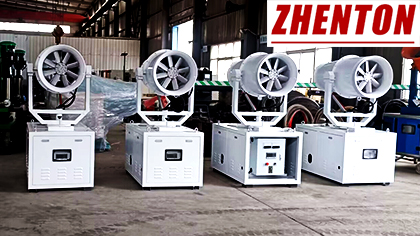Dust Control During Demolition Is
Crucial to Mitigate Health Risks and
Environmental Impacts Caused by
Airborne Particles.Proper Planning
and Adherence to Best Practices in
Dust Control Contribute Significantly
to a Safer and More Sustainable
Demolition Process.
Effective Dust Control During Demolition Requires a
Combination of Surface Wetting,Airborne Capture,
Engineering Controls,Planning,Compliance with
Environmental Regulations,and Understanding the
Specific Types of Dust and Their Risks.Implementing
These Measures Not Only Ensures the Safety of Workers
and Nearby Communities but Also Protects the
Environment from Potential Harm.
It Is Essential to Comply with Local,State,and Federal
Regulations Regarding Dust Control During Demolition
Activities.These Regulations May Specify Acceptable
Levels of Dust Emissions,Required Control Measures,
or Other Guidelines to Ensure Environmental and Public
Health Protection.

Here Are Some Effective Methods for Dust Control
During Demolition:
Surface Wetting:
Site Soaking:Thoroughly Soaking the Demolition Site
with Water Before Starting the Work Helps to Knock
Down Dust and Prevent It from Becoming Airborne.
This Method Is Often Repeated in Specific Areas Before
Work Begins There.
Continuous Spraying:Continuously Spraying Water
During Demolition Activities Helps to Keep the
Dust Settled.
Airborne Capture:
Water Mist and Turbine Systems:Using Water Misting
Systems and Turbines Can Effectively Capture Airborne
Dust.These Systems Create Fine Water Droplets That
Bind with Dust Particles and Bring Them to the Ground.
Atomized Misting Equipment:This Equipment Releases
a Fine Mist That Captures Airborne Particles,Creating a
Moist Layer on the Ground That Prevents Dust from
Becoming Airborne Again.
Dust Barriers and Containment:
Physical Barriers:Setting Up Physical Barriers Such as
Tarps or Plastic Sheeting Around the Demolition Site
Can Help Contain Dust Within the Site.
Air Scrubbers:Using Air Scrubbers Can Help Filter
Dust from the Air Within Enclosed Spaces,Improving
Air Quality.
Following Comprehensive Guidance on Best Practices
for Controlling Dust from Construction and Demolition
Activities Can Help in Effectively Managing Dust
Generation.By Employing These Methods,Demolition
Projects Can Significantly Reduce Dust Emissions,
Protecting Both the Environment and Public Health.










